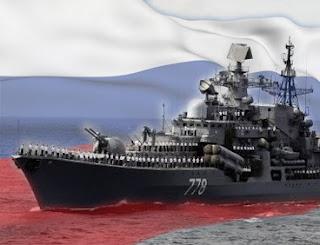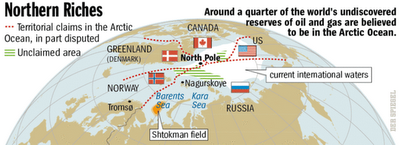 Fourteen years after the Kursk
disaster, Russia’s
Northern Fleet will soon have a new multi-purpose rescue vessel. Currently
under construction by the Admiralty Shipyards in Saint Petersburg, the “Igor Belousov” will be
able to help out wrecked submarines and engage in complex search operations, as
well as take part in military actions. Equipped with a landing pad for
helicopters, vacuum chambers, under-water equipment able to operate on 700 meter depths, and an
advanced deepwater diving complex, the vessel will also carry advanced
weaponry, thereby constituting a formidable, multi-purpose warship.
Fourteen years after the Kursk
disaster, Russia’s
Northern Fleet will soon have a new multi-purpose rescue vessel. Currently
under construction by the Admiralty Shipyards in Saint Petersburg, the “Igor Belousov” will be
able to help out wrecked submarines and engage in complex search operations, as
well as take part in military actions. Equipped with a landing pad for
helicopters, vacuum chambers, under-water equipment able to operate on 700 meter depths, and an
advanced deepwater diving complex, the vessel will also carry advanced
weaponry, thereby constituting a formidable, multi-purpose warship.
Established in 1933 with the name of Soviet Fleet of the Northern Sea, the Northern Fleet has access to the Arctic and Atlantic Oceans, and is headquartered at Severomorsk, at the top of the Kola Peninsula near Murmansk, with additional home ports at Kola, Motovsky, Gremikha and Ura Guba. Although its mission is to defend Russia’s far north-western region by patrolling the waters of the Barents and Kara seas, in recent years the Fleet has resumed its presence in the oceans in an attempt to recover the primary role played during the Cold War, when it was the pride of the Soviet Union.
In the triennium 2007-2009, the heavy aircraft carrying cruiser “Admiral Kuznetsov” regularly performed training and combat tasks in the Atlantic and the Mediterranean, carrying out two military services. In the same period, the heavy nuclear-powered missile cruiser “Pyotr Veliky” twice crossed the Atlantic and made visits to Venezuela, South Africa, India, France and Syria, taking part in the international exercises “Venrus-2008” and “Indra-2009,” while in 2010, along the shortest route through the Suez Canal and the Indian Ocean, the warship moved to the Far East to take part in the “Vostok-2010” large-scale strategic exercise.
The naval cooperation between the Northern Fleet and the navies of anti-American regimes in the Caribbean like Hugo Chavez’s in Venezuela hasa political meaning, being Russia’s response to NATO’s expansion in Eastern Europe. A partly similar argument can be made to explain Moscow’s support to Bashar al-Assad’s regime in Syria, where the Russian Navy still maintains access to a Soviet-era naval base at Tartus. If it is therefore undeniable the tactical use of the naval army made until now by the Kremlin while promoting missions in the Atlantic and the Mediterranean, there is a region where the Russian Navy, and notably the Northern Fleet, is called to play a primary role in Russia’s grand strategy for the future: the Arctic Ocean.
In 2008, almost immediately after coming to power, the former Russian president Dmitry Medvedev set out his assertive strategy to expand the country’s borders northward, telling his top security lieutenants that their “biggest task is to turn the Arctic into Russia’s resource base for the 21st century.” According to an assessment conducted by the US Geological Survey (USGS), the region holds an estimated 13% (90 billion barrels) of the world’s undiscovered conventional oil resources and 30% of its undiscovered conventional natural gas resources. Hence Moscow’s attempts to prove that that the Lomonosov Ridge, in the Central Arctic Ocean, is an extension of the Siberian continental shelf.

In this context, a strengthening of the Russian military presence in the region through the expansion of the Northern Fleet is a means to exercise pressure on the international community, should it not accept the scientific evidence of Moscow’s claims. Supremacy in the Arctic would allow Russia not only to exploit its huge energy resources, but also to turn the Northern Sea Route, which travels east via the region to Asia-Pacific markets, into a major international trade route controlled by Moscow. This is why Russia’s commitment to the strengthening of the Northern Fleet is more than an effort aimed at bringing the Russian Navy back to the times of the Soviet Union, being rather a sign of the Kremlin’s determination to turn it into the cutting edge of tomorrow’s Eurasia, an envisaged geo-economic space stretching from the desert steppes of Kazakhstan to the glaciers of the North Pole.

